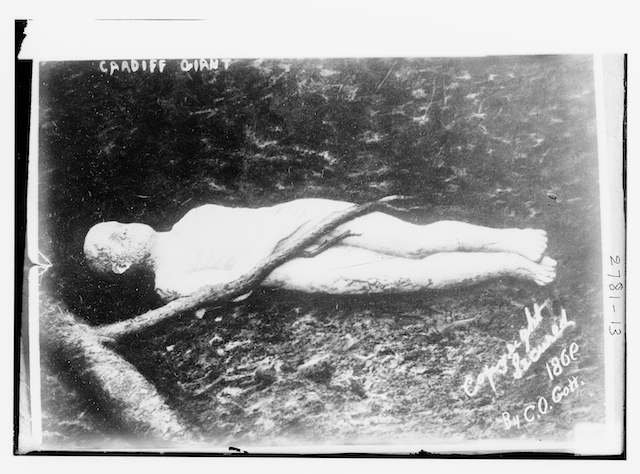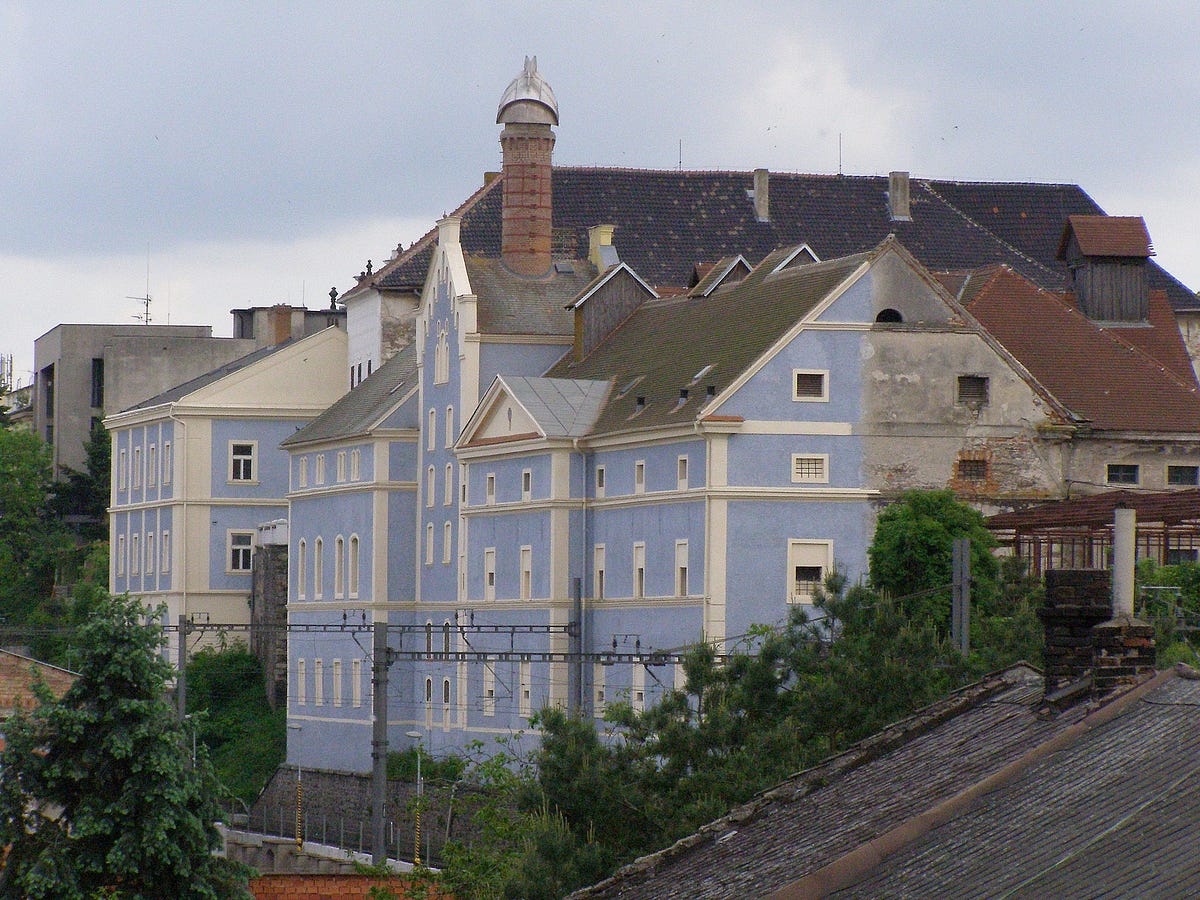
A Very Tall Tale: Photograph of the Cardiff Giant (ca. 1869)
Early in the morning on Saturday, October 16, 1869, Gideon Emmons left his homestead in Cardiff, New York — a hamlet of Onondaga County — and hiked alongside Bear Mountain to Stub Newell’s farm, where he had been hired to dig a well. Life had been hard as of late, unmiraculous, dull. Having lost his left arm at the Civil War Battle of Gravelly Run — and forced to convalesce while his regiment celebrated their victory at Appomattox — he’d turned to alcohol for solace. He did not question why the farmer Newell had chosen him, a one-armed man, to sink the well that day: it was a means to a familiar end. Emmons and a fellow laborer, Henry Nicohols — Newell’s brother-in-law — began to remove oatmeal-like soil from the swale, and around eleven o’clock, the diggers struck something hard. Looking down, they glimpsed a sobering site: a giant, petrified foot resting amid the clay. “I declare, some old Indian has been buried here!” one of them exclaimed. A few hours later, the ten-foot gypsum titan had been exhumed.
Within days of the petrified giant’s discovery, newspapers across the country were reporting this sensational tale. By Tuesday, the New York Daily Tribune ran a cover story, while the Syracuse Daily Standard described its presence as practically inescapable, stomping into every social space and home:


















